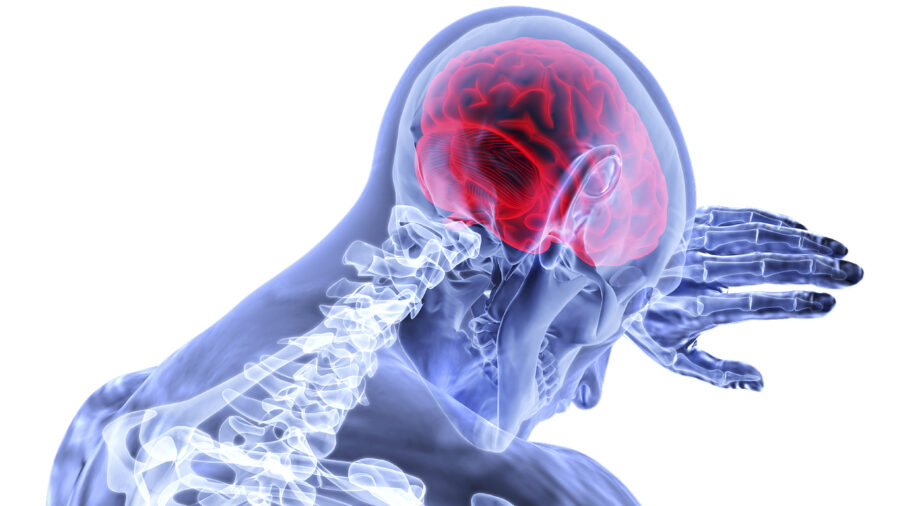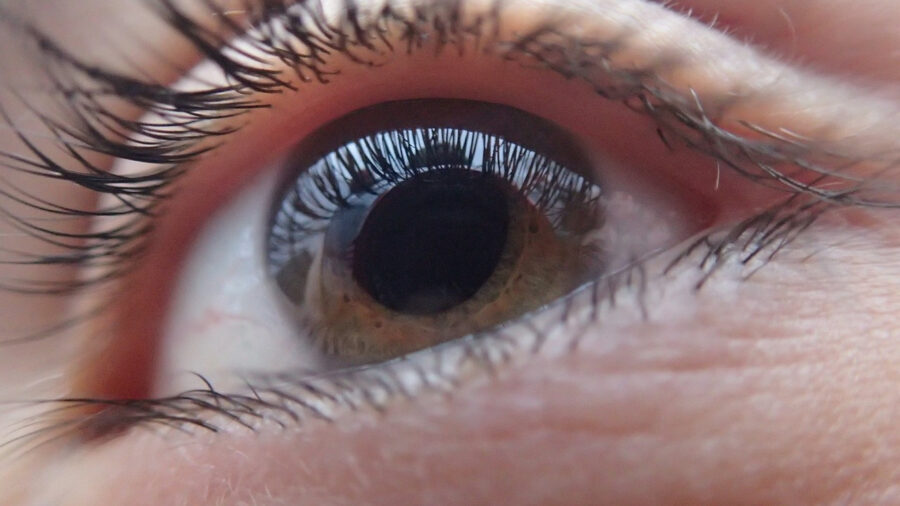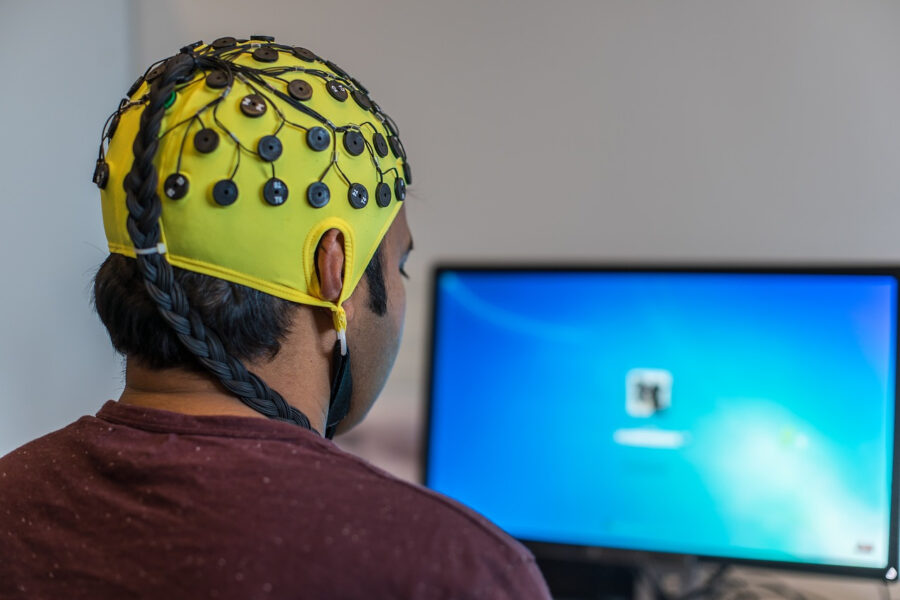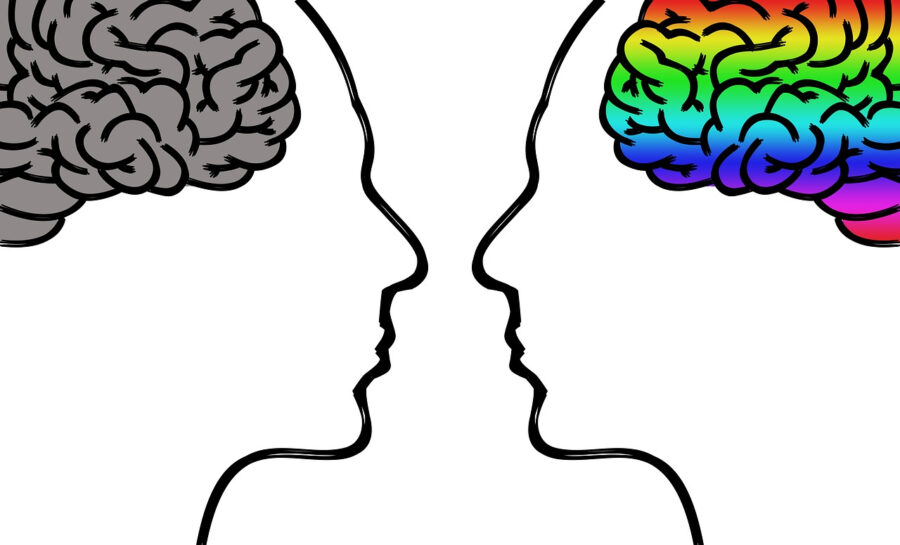People With Mind-Blindness Are Harder To Scare
Mind-blindness has been found to have a major effect on our emotions.
This article is more than 2 years old

There is a fascinating new study out now through the University of New South Wales that says people who have aphantasia, also known as mind-blindness, which is the inability to visualize mental images, are harder to scare with spooky stories. These findings are notable for the fact that it now suggests imagery may be closer linked to emotions than previously thought by scientists.
The study, which researchers published in Proceedings of the Royal Society B, had them test people with mind-blindness and their reactions to reading distressing scenarios such as being in a plane that is about to crash, being chased by a shark, or falling off a cliff. In order to gauge and measure each participant’s fear response, the researchers were physically able to monitor the changing skin conductivity levels. To us laypeople, this means how much a person will sweat when reading these stories. These types of tests are also common in psychological research when determining the body’s physical expression of emotion.
The findings showed that the fear factor was lost among these scary stories when the participants weren’t able to visually imagine the scene they were reading. The suggestion based on these results is that scientists now feel there is a much closer connection to imagery and emotions than previously thought. This means that mind-blindness can have a profound effect on a person’s ability to process emotions.

“We found the strongest evidence yet that mental imagery plays a key role in linking thoughts and emotions,” said Professor Joel Pearson, Director of UNSW Science’s Future Minds Lab and the senior author on the paper via Science Daily. “In all of our research to date, this is by far the biggest difference we’ve found between people with aphantasia and the general population.”
The way researchers conducted their mind-blindness study sounds like the beginning of a B horror movie in itself. They started by leading 46 participants (22 had aphantasia, the other 24 did not) into a dimly lit room attaching electrodes to their skin. The skin is the best-known conductor of electricity when a person starts to feel a strong emotion such as fear.
After the scientists left the room, they turned out the light, enveloping the participants in pitch black. A story then appeared on a screen in front of them but the story didn’t jump into the scary stuff immediately. They would start harmlessly, some stating “You are at the beach, in the water” or “You are on a plane, by the window,” simple set-ups to allow the participants to begin to visualize their surroundings. But as the stories continued, the suspense would ramp up. Participants would see a dark flash in the water ahead of them with people on the beach pointing. They would see lights dimming on the airplane and then the plane starts to shake.

“Skin conductivity levels quickly started to grow for people who were able to visualize the stories,” Professor Pearson said. “The more the stories went on, the more their skin reacted. “But for people with aphantasia, the skin conductivity levels pretty much flatlined.”
But researchers needed to make sure it was legitimate mind-blindness and not simply the participant’s fear threshold that caused the difference in reactions, so they repeated the test. This time, though, they used actual frightening images such as a snake bearing its fangs or a picture of a dead person. “These two sets of results suggest that aphantasia isn’t linked to reduced emotion in general, but is specific to participants reading scary stories,” Prof. Pearson explained. “The emotional fear response was present when participants actually saw the scary material play out in front of them.” He concluded, “The findings suggest that imagery is an emotional thought amplifier. We can think all kinds of things, but without imagery, the thoughts aren’t going to have that emotional ‘boom’.”
While mind-blindness affects anywhere from 2-5 percent of the population, there is actually not much known about the condition. It is believed, from a study conducted last year by the University of New South Wales, that a widespread pattern of changes related to other cognitive processes such as dreaming, remembering, and imagining are linked to aphantasia.

Professor Pearson wanted to also note that while reading may not hold an emotional impact for those with mind-blindness, it is important to know that their results were based on averages. It’s not a one-size-fits all mold when it comes to aphantasia. “Aphantasia comes in different shapes and sizes,” he says. “Some people have no visual imagery, while other people have no imagery in one or all of their other senses. Some people dream while others don’t. So don’t be concerned if you have aphantasia and don’t fit this mold. There are all kinds of variations to aphantasia that we’re only just discovering.”
One of the things scientists are discovering is that mind-blindness is heavily linked to autism. The ability to develop mental awareness that revolves around thoughts, beliefs, desires, feelings, and actions among others is called the theory of mind. The mind-blindness theory says that children who delay in developing these will often develop autism. Scientists widely agree now that autism is a neurodevelopmental disorder. It persists throughout life but there are varying degrees of autism. Its cause is largely genetic and unfortunately, there are no known medical treatments for autism. There are, though, many well-structured behavioral treatments with beneficial effects that allow for compensatory learning at high levels.
There seems to be a higher number of those with autism when broken down into male and female categories with the males outnumbering females with autism by a 3 to 1 ratio, though like mind-blindness, there are different levels. It is true that autism is a disorder that affects many cognitive functions, but autism does not imply that it will affect said functions globally. Many times, autism’s main effect is the failure of social communication, but this doesn’t mean the failure covers all social abilities.

Professor Pearson and his research team at the University of New South Wales do not plan on stopping their mind-blindness studies with the conclusion of this study. Aphantasia is neural diversity,” says Prof. Pearson. “It’s an amazing example of how different our brain and minds can be.” With that in mind, the professor has set plans in motion to study how people with aphantasia might differently experience disorders such as Post Traumatic Stress Disorder and anxiety.












